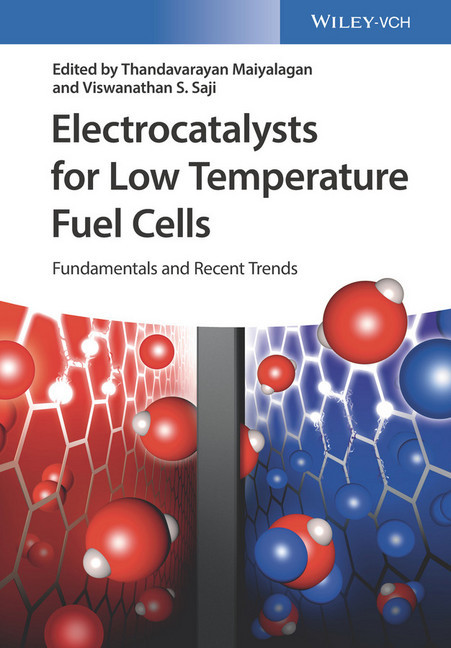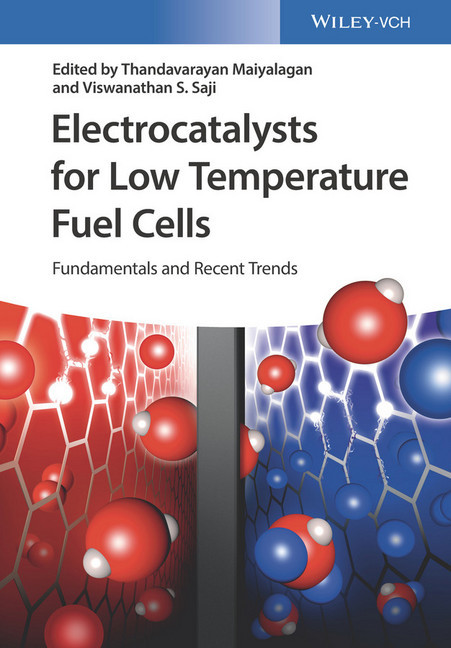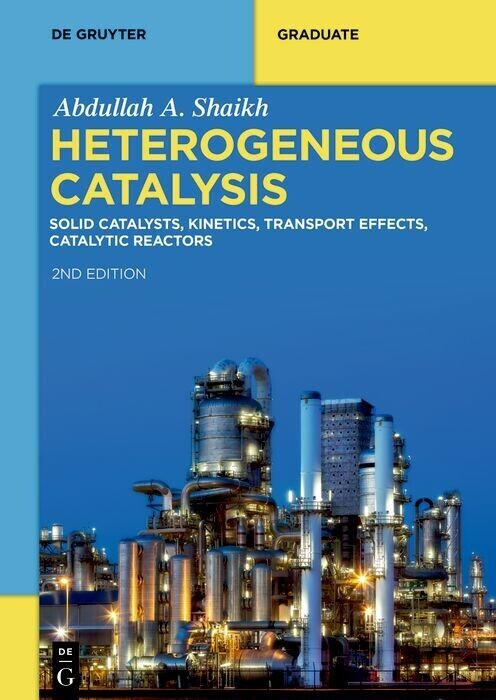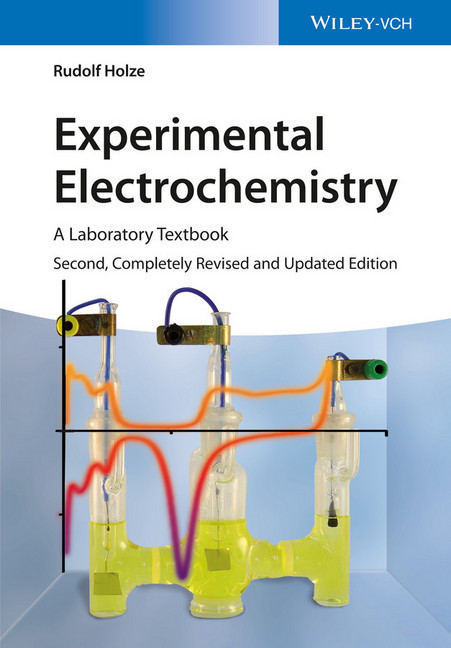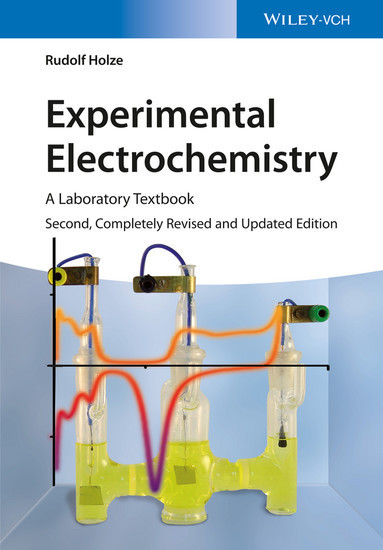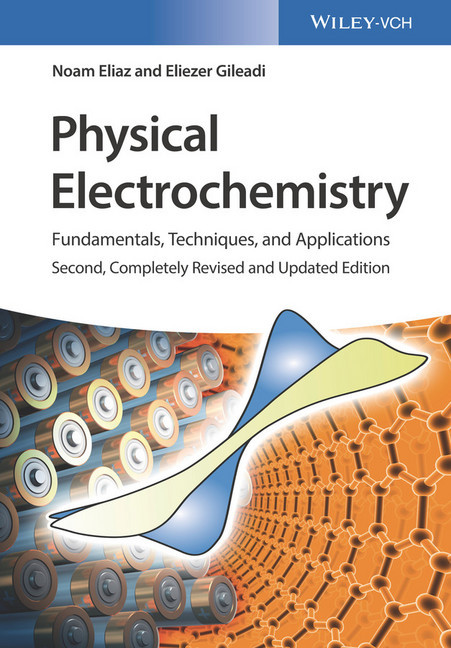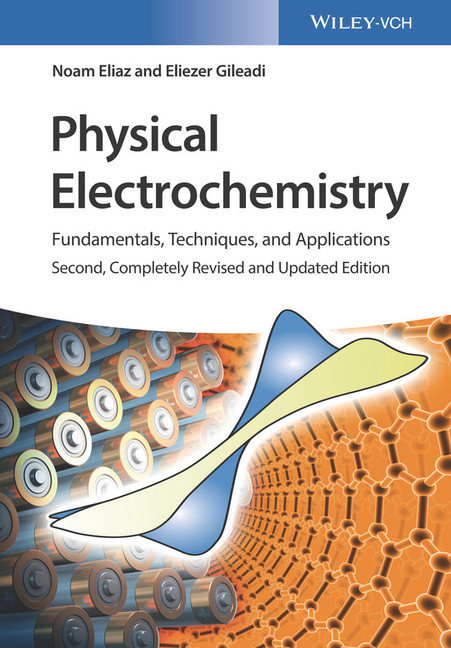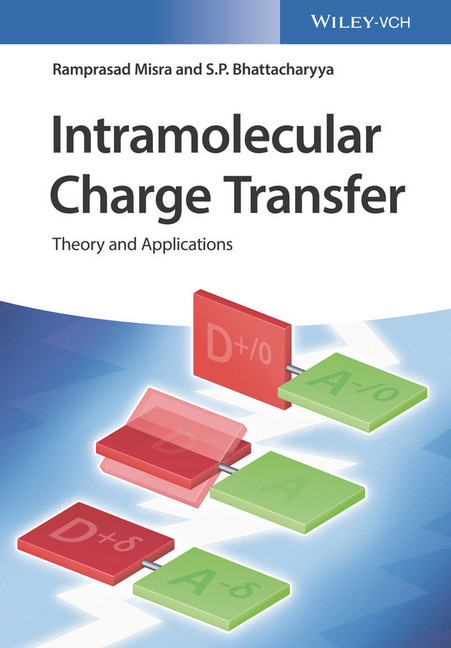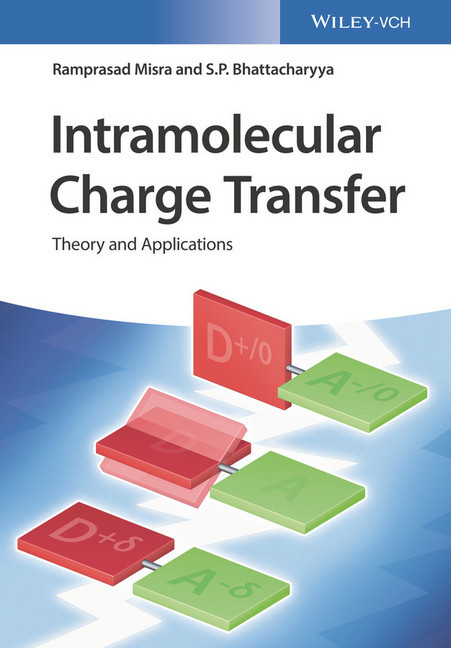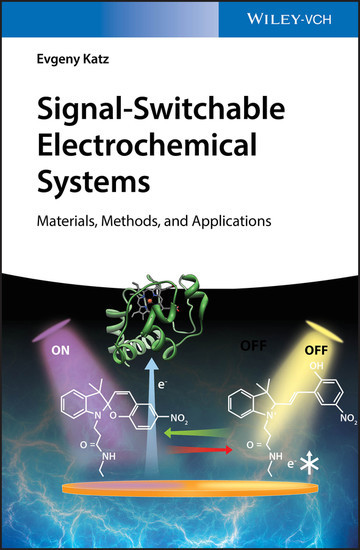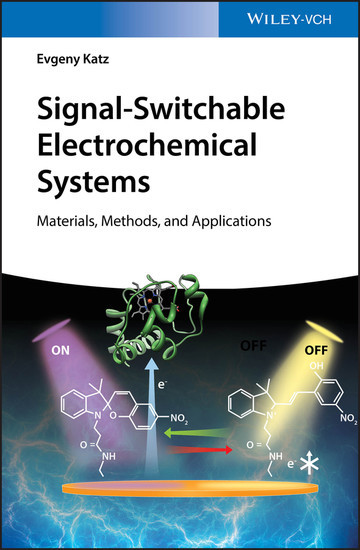Electrocatalysts for Low Temperature Fuel Cells
Fundamentals and Recent Trends
Meeting the need for a text on solutions to conditions which have so far been a drawback for this important and trend-setting technology, this monograph places special emphasis on novel, alternative catalysts of low temperature fuel cells. Comprehensive in its coverage, the text discusses not only the electrochemical, mechanistic, and material scientific background, but also provides extensive chapters on the design and fabrication of electrocatalysts.
A valuable resource aimed at multidisciplinary audiences in the fields of academia and industry.
Thandavarayan Maiyalagan is currently an Associate Professor of the Department of Chemistry at SRM University, Kattankulathur, India. He received his Ph.D in Physical Chemistry from the Indian Institute of Technology, Madras, and completed postdoctoral programs at Newcastle University (UK), Nanyang Technological University (Singapore) and at the University of Texas, Austin (USA). His main research interests concern new materials and their electrochemical properties for energy conversion and storage devices, electrocatalysts, fuel cells and biosensors. He has delivered various key lectures in many national and international forums. He has published over 80 articles on the innovative design of the materials for energy conversion and storage.
Viswanathan S. Saji received his Ph.D. (2003) degree from the University of Kerala, India and was a Research Associate at the Indian Institute of Technology, Bombay (2004-2005) and the Indian Institute of Science, Bangalore (2005-2007). Later, he moved to South Korea where he was a Postdoctoral Researcher at Yonsei University (2007-2008) and Sunchon National University (2009), Research Professor at Chosun University (2008-2009), Senior Research Scientist at Ulsan National Institute of Science and Technology (2009-2010) and Research Professor at Korea University (2010-2013). In 2014, he joined the University of Adelaide, where he was an Endeavour Research Fellow in the School of Chemical Engineering. Presently, he is working as an Executive Director to CIOSHI, Kerala, India.
A valuable resource aimed at multidisciplinary audiences in the fields of academia and industry.
Thandavarayan Maiyalagan is currently an Associate Professor of the Department of Chemistry at SRM University, Kattankulathur, India. He received his Ph.D in Physical Chemistry from the Indian Institute of Technology, Madras, and completed postdoctoral programs at Newcastle University (UK), Nanyang Technological University (Singapore) and at the University of Texas, Austin (USA). His main research interests concern new materials and their electrochemical properties for energy conversion and storage devices, electrocatalysts, fuel cells and biosensors. He has delivered various key lectures in many national and international forums. He has published over 80 articles on the innovative design of the materials for energy conversion and storage.
Viswanathan S. Saji received his Ph.D. (2003) degree from the University of Kerala, India and was a Research Associate at the Indian Institute of Technology, Bombay (2004-2005) and the Indian Institute of Science, Bangalore (2005-2007). Later, he moved to South Korea where he was a Postdoctoral Researcher at Yonsei University (2007-2008) and Sunchon National University (2009), Research Professor at Chosun University (2008-2009), Senior Research Scientist at Ulsan National Institute of Science and Technology (2009-2010) and Research Professor at Korea University (2010-2013). In 2014, he joined the University of Adelaide, where he was an Endeavour Research Fellow in the School of Chemical Engineering. Presently, he is working as an Executive Director to CIOSHI, Kerala, India.
1;Electrocatalysts for Low Temperature Fuel Cells: Fundamentals and Recent Trends;1 2;Contents;7 3;List of Contributors;19 4;Preface;25 5;1: Principle of Low-temperature Fuel Cells Using an Ionic Membrane;29 5.1;1.1 Introduction;29 5.2;1.2 Thermodynamic Data and Theoretical Energy Efficiency under Equilibrium (j = 0);30 5.2.1;1.2.1 Hydrogen/oxygen Fuel Cell;30 5.2.2;1.2.2 Direct Alcohol Fuel Cell;33 5.3;1.3 Electrocatalysis and the Rate of Electrochemical Reactions;36 5.3.1;1.3.1 Establishment of the Butler-Volmer Law (Charge Transfer Overpotential);37 5.3.2;1.3.2 Mass Transfer Limitations (Concentration Overpotential);39 5.3.3;1.3.3 Cell Voltage versus Current Density Curves;41 5.3.4;1.3.4 Energy Efficiency under Working Conditions ( j?0);43 5.3.4.1;1.3.4.1 Hydrogen/oxygen Fuel Cell;43 5.3.4.2;1.3.4.2 Direct Ethanol Fuel Cell;43 5.4;1.4 Influence of the Properties of the PEMFC Components (Electrode Catalyst Structure, Membrane Resistance, and Mass Transfer Limitations) on the Polarization Curves;44 5.4.1;1.4.1 Influence of the Catalytic Properties of Electrodes;45 5.4.2;1.4.2 Influence of the Membrane-specific Resistance;45 5.4.3;1.4.3 Influence of the Mass Transfer Limitations;46 5.5;1.5 Representative Examples of Low-temperature Fuel Cells;47 5.5.1;1.5.1 Direct Methanol Fuel Cell for Portable Electronics;47 5.5.2;1.5.2 Hydrogen/air PEMFC for the Electrical Vehicle;53 5.6;1.6 Conclusions and Outlook;58 5.7;Acknowledgments;59 5.8;References;59 6;2: Research Advancements in Low-temperature Fuel Cells;63 6.1;2.1 Introduction;63 6.2;2.2 Proton Exchange Membrane Fuel Cells;66 6.2.1;2.2.1 Current Scenario;69 6.2.2;2.2.2 Ideal Properties for Electrocatalyst, Catalyst Support, and Current Collectors for Market Entry;71 6.2.3;2.2.3 Role of Nanomaterials in Bringing Down Pt Loading;72 6.2.4;2.2.4 Types of Catalyst Supports (Activated Carbon, CNT, Graphene, etc.);72 6.2.5;2.2.5 Non-Pt-Based Catalysts;74 6.2.6;2.2.6 Catalyst Corrosion and Fuel Cell Life (Protocols for Testing);74 6.2.7;2.2.7 Type of Fuels (Alcohols);74 6.3;2.3 Alkaline Fuel Cells;78 6.3.1;2.3.1 Fuels for Alkaline Membrane Fuel Cells;78 6.3.2;2.3.2 Types of Catalysts;82 6.3.3;2.3.3 Types of Membranes;82 6.3.4;2.3.4 System Development;85 6.4;2.4 Direct Borohydride Fuel Cells;87 6.4.1;2.4.1 Catalyst Development;87 6.4.2;2.4.2 System Development;89 6.5;2.5 Regenerative Fuel Cells;90 6.5.1;2.5.1 Electrocatalysts;90 6.5.2;2.5.2 System Development;91 6.6;2.6 Conclusions and Outlook;92 6.7;Acknowledgments;93 6.8;References;93 7;3: Electrocatalytic Reactions Involved in Low-temperature Fuel Cells;103 7.1;3.1 Introduction;103 7.2;3.2 Preparation and Characterization of Pt-based Plurimetallic Electrocatalysts;104 7.2.1;3.2.1 Preparation Methods of the Catalysts;104 7.2.1.1;3.2.1.1 Electrochemical Deposition;104 7.2.1.2;3.2.1.2 Impregnation-Reduction Methods;105 7.2.1.3;3.2.1.3 Colloidal Methods;106 7.2.1.4;3.2.1.4 Carbonyl Complex Route;109 7.2.1.5;3.2.1.5 Plasma-enhanced PVD;110 7.2.2;3.2.2 Characterization of Catalysts and Determination of Reaction Mechanisms by Physicochemical Methods;110 7.2.2.1;3.2.2.1 Physicochemical Characterizations;110 7.2.2.2;3.2.2.2 Electrochemical Measurements: Cyclic Voltammetry and CO Stripping;111 7.2.2.3;3.2.2.3 Infrared Reflectance Spectroscopy (EMIRS, FTIRS);113 7.2.2.4;3.2.2.4 Differential Electrochemical Mass Spectrometry;114 7.2.2.5;3.2.2.5 Chromatographic Techniques;116 7.3;3.3 Mechanisms of the Electrocatalytic Reactions Involved in Low-temperature Fuel Cells;118 7.3.1;3.3.1 Electrocatalytic Oxidation of Hydrogen;119 7.3.2;3.3.2 Electrocatalytic Reduction of Dioxygen;121 7.3.3;3.3.3 Electrocatalysis of CO Oxidation;124 7.3.4;3.3.4 Oxidation of Alcohols in a Direct Alcohol Fuel Cell (DMFC, DEFC);126 7.3.4.1;3.3.4.1 Oxidation of Methanol;127 7.3.4.2;3.3.4.2 Oxidation of Ethanol;130 7.4;3.4 Conclusions and Outlook;133 7.5;Acknowledgment;134 7.6;References;134 8;4: Direct Hydrocarbon Low-temperature Fuel Cell;141 8.1;4.1 Introduction;141 8.2;4.2
Viswanathan, Saji S.
Maiyalagan, Thandavarayan
| ISBN | 9783527803897 |
|---|---|
| Artikelnummer | 9783527803897 |
| Medientyp | E-Book - PDF |
| Copyrightjahr | 2017 |
| Verlag | Wiley-VCH |
| Umfang | 616 Seiten |
| Sprache | Englisch |
| Kopierschutz | Adobe DRM |

